Fleeting Pleasures
In which Norm celebrates the resurrection of Paul Auster and Wayne Wang's SMOKE and BLUE IN THE FACE, and also spins up the latest from Severin Films.
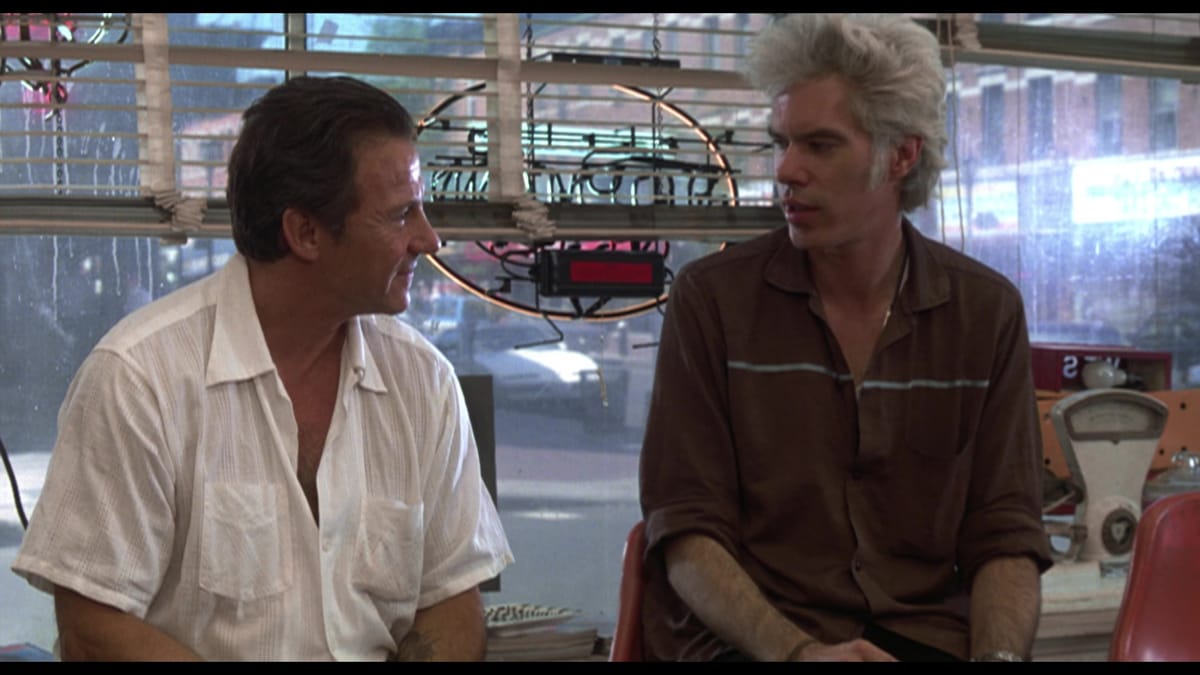
Paul Auster died earlier this year, and I didn’t write about it because I didn’t know what to say. It feels like so many artists are dying, hollowing out the world as they go, and while Auster had sort of faded into the background of luminaries whose truly revelatory work is well behind them, he was still writing and thinking – publishing what would be his last novel, Baumgartner, just last fall.
Auster’s 1992 novel Leviathan was a lightning bolt for me, a book that reached me at exactly the right time in my own development to challenge and expand my conception of literature and expression. (Admittedly, I was 24 and in dire need of challenging.) Reading Leviathan got me onto Auster’s New York trilogy, and by the time I was finished with those I was a fan for life. Philip Haas adapted his spare novel The Music of Chance into a really good little film starring James Spader and Mandy Patinkin, and that led Auster to take a run at writing his own movie, Smoke, in collaboration with Wayne Wang.

Smoke is a strange, beguiling drama, focusing on the relationship between a recently widowed novelist named Paul (William Hurt) and a tobacconist named Auggie (Harvey Keitel), and the various Brooklynites whose lives intersect with theirs. Auggie’s mildly obsessive habit of photographing his shop at the same time every morning has given Paul an unexpected moment of connection to his lost wife, and from there the two men form a kinship over smoking and storytelling – two things that are already a little outdated by the ’90s – eventually becoming each other’s support system.
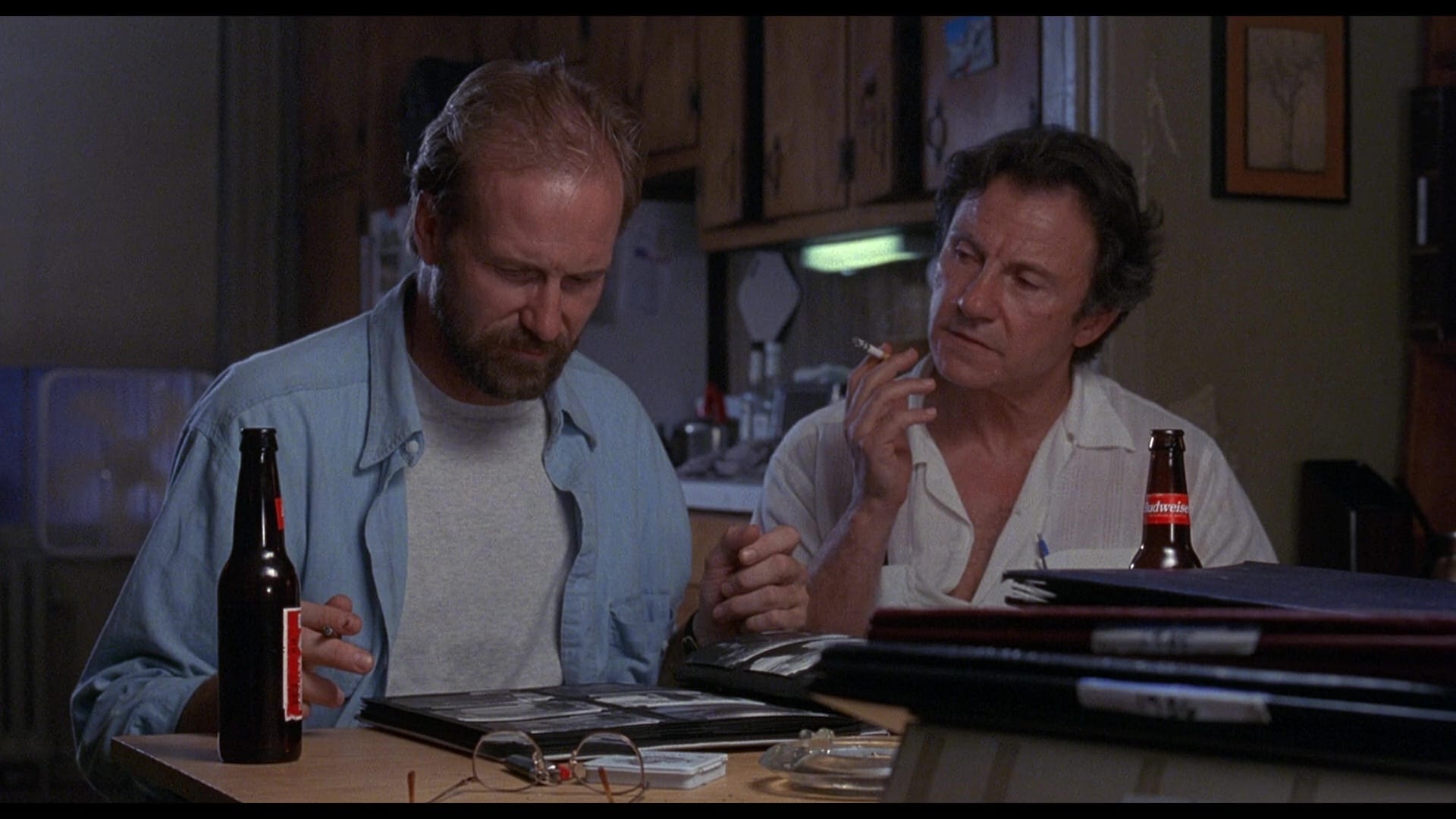
It’s a small, tenderly observed film about the vagaries and preciousness of friendship and connection, which is right in line with Wang’s cinema … but it’s also about the casual complexity of existing in society, where a random encounter or event can reverberate through one’s life in unexpected ways, which is Auster’s whole thing. Hurt and Keitel are wonderful, but they’re not the only great actors we see here: Harold Perrineau Jr. turns up as a kid who rooms with Paul and works for Auggie for a while, and Stockard Channing, Ashley Judd, Forest Whitaker, Jared Harris, Malik Yoba, Mel Gorham, Giancarlo Esposito and Victor Argo are among the supporting players who wander through for a scene or two, all of them unimpeachable.
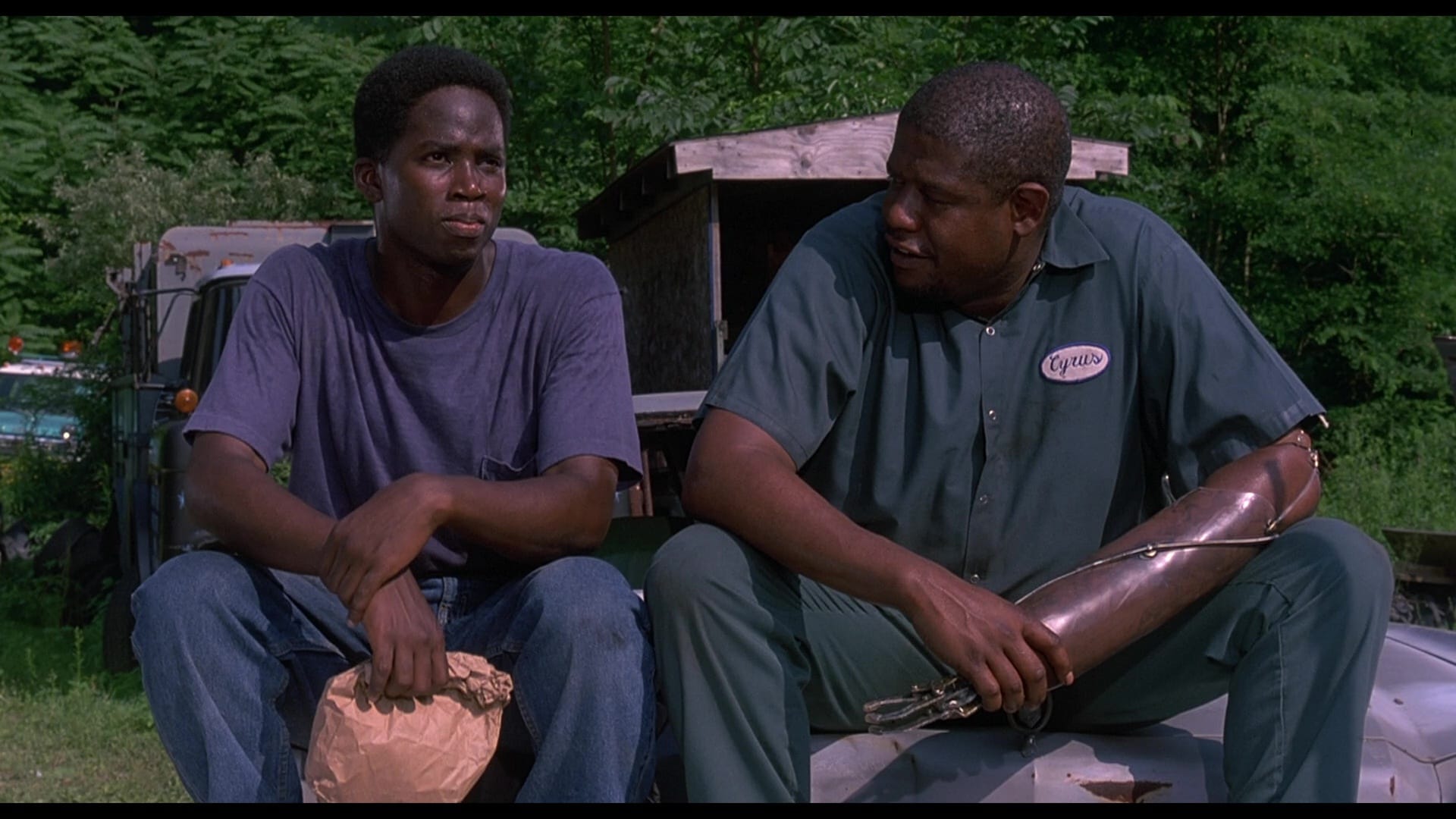
Smoke is a small movie, but it’s always on point, and there’s a warmth to the film even when things are at their heaviest that leaves us wanting more – even if the film does find a perfect ending for its story and characters. And in a rare act of generosity, Harvey Weinstein’s Miramax – newly flush with Disney money – let there be more: Just four months after Smoke opened, along came Blue in the Face, a companion piece of sorts that grew out of Keitel’s improvisations and kibitzing with his co-stars during the Smoke shoot. (Wang and Auster squeezed another shooting week out of Weinstein, and the result was a whole second movie.)
Tonally, Blue is nothing like Smoke; it’s a more raucous and unstructured affair, with Auster and Wang inviting a bunch of friends to wander in and goof around in Auggie’s cigar shop. Most of it is improvised, and not always well; you can immediately tell which actors are comfortable with the concept, and which ones are just there to do a bit, like Roseanne Barr turning up as Auggie’s cranky wife.
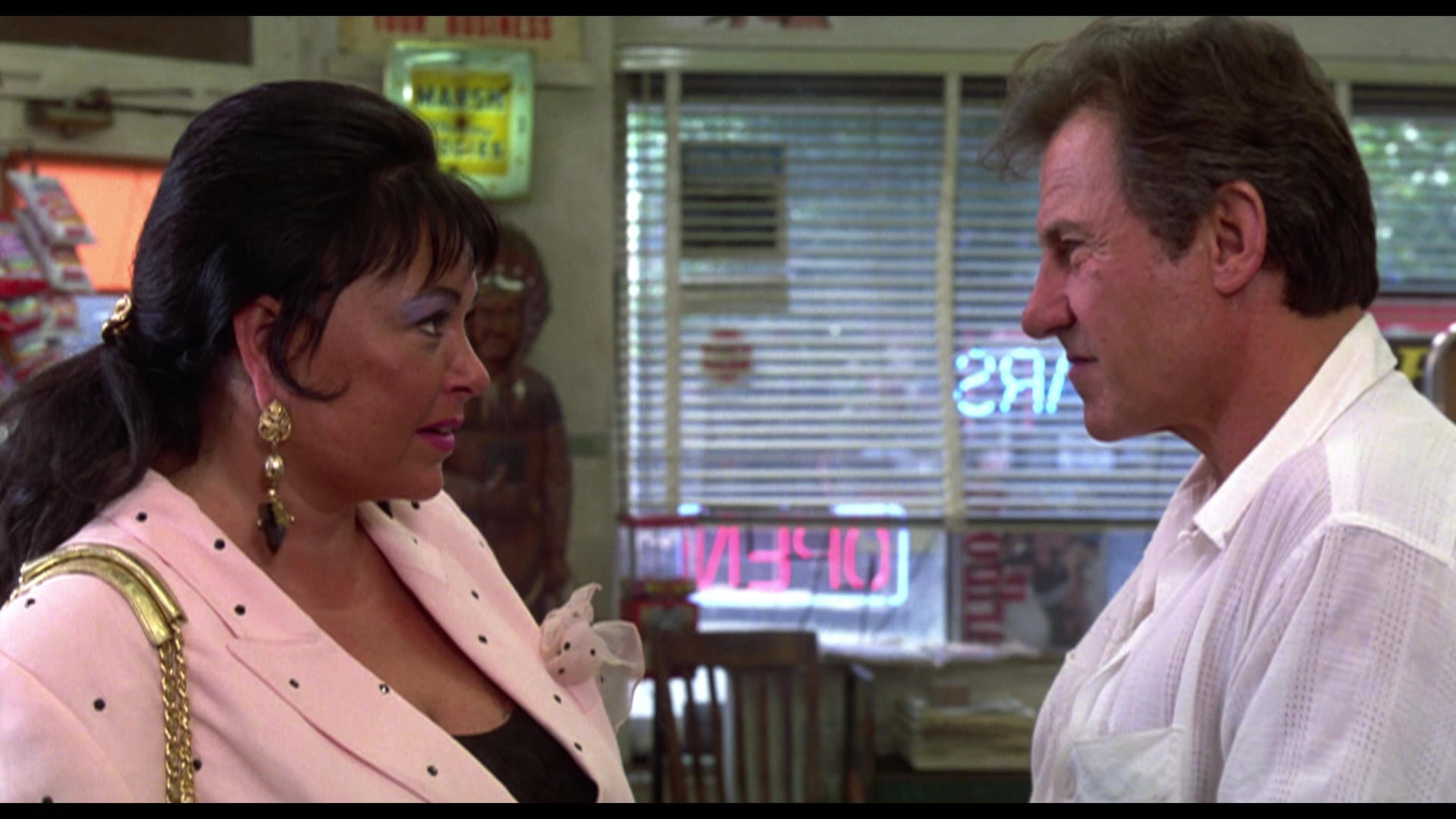
But Blue in the Face has a similarly open heart, and the same sense of sympathy and coincidence on which Auster thrives as an author. The film invites us to sit back and enjoy the sight of New York personalities like Lou Reed, Madonna and Jim Jarmusch strolling into Auggie’s place to screw around with the audience’s expectations of them … or for Michael J. Fox to just show up incongruously for a few minutes as a weird pollster.
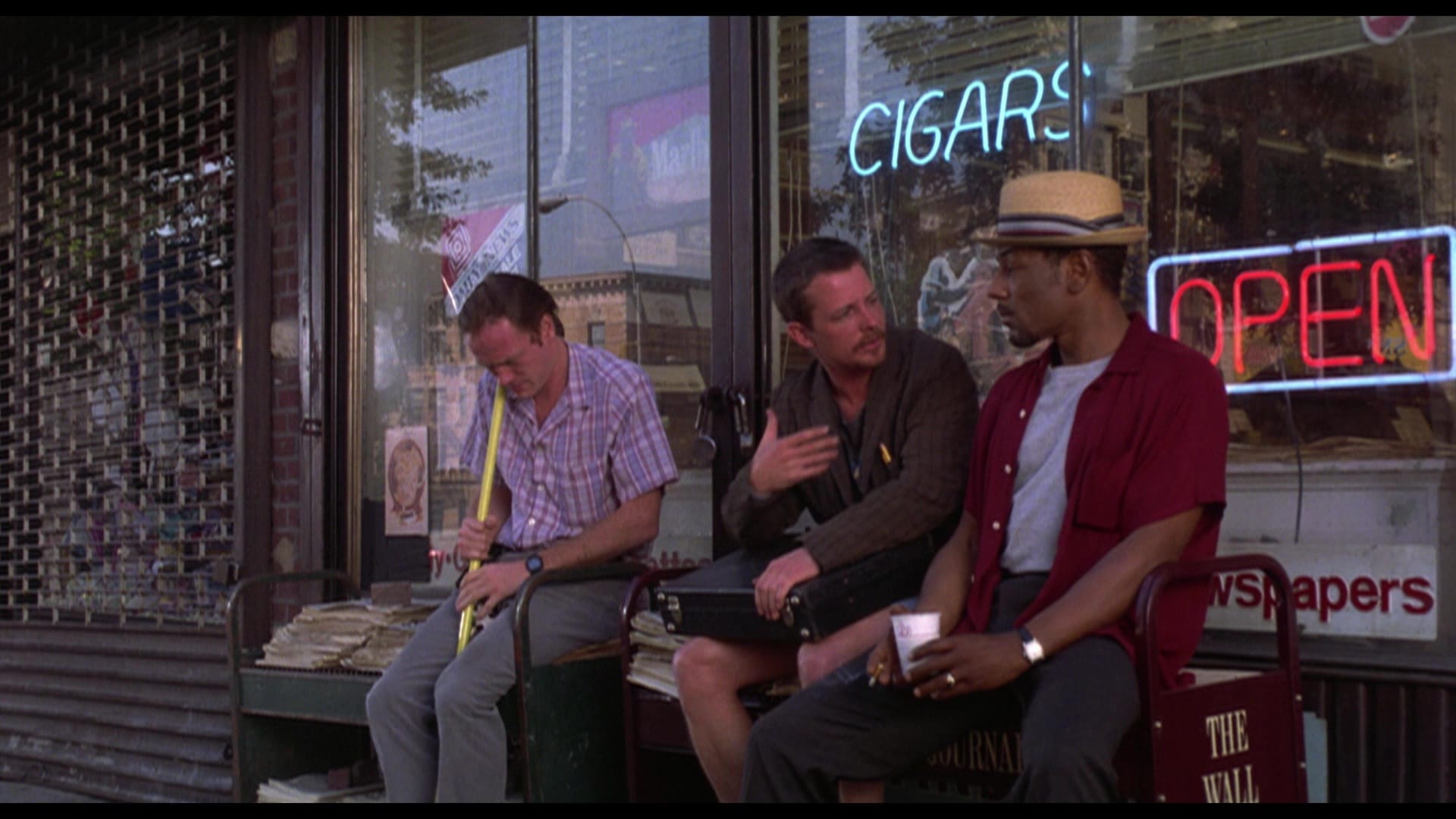
True, it doesn’t really work as a stand-alone film, but Mira Sorvino drops by! There’s a song by David Byrne and Selena! Keith David plays the ghost of Jackie Robinson! And Lily Tomlin, playing a dude! Esposito and Harris and Gorham and Argo and Yoba are all back, some of them playing different characters! What more do you need?
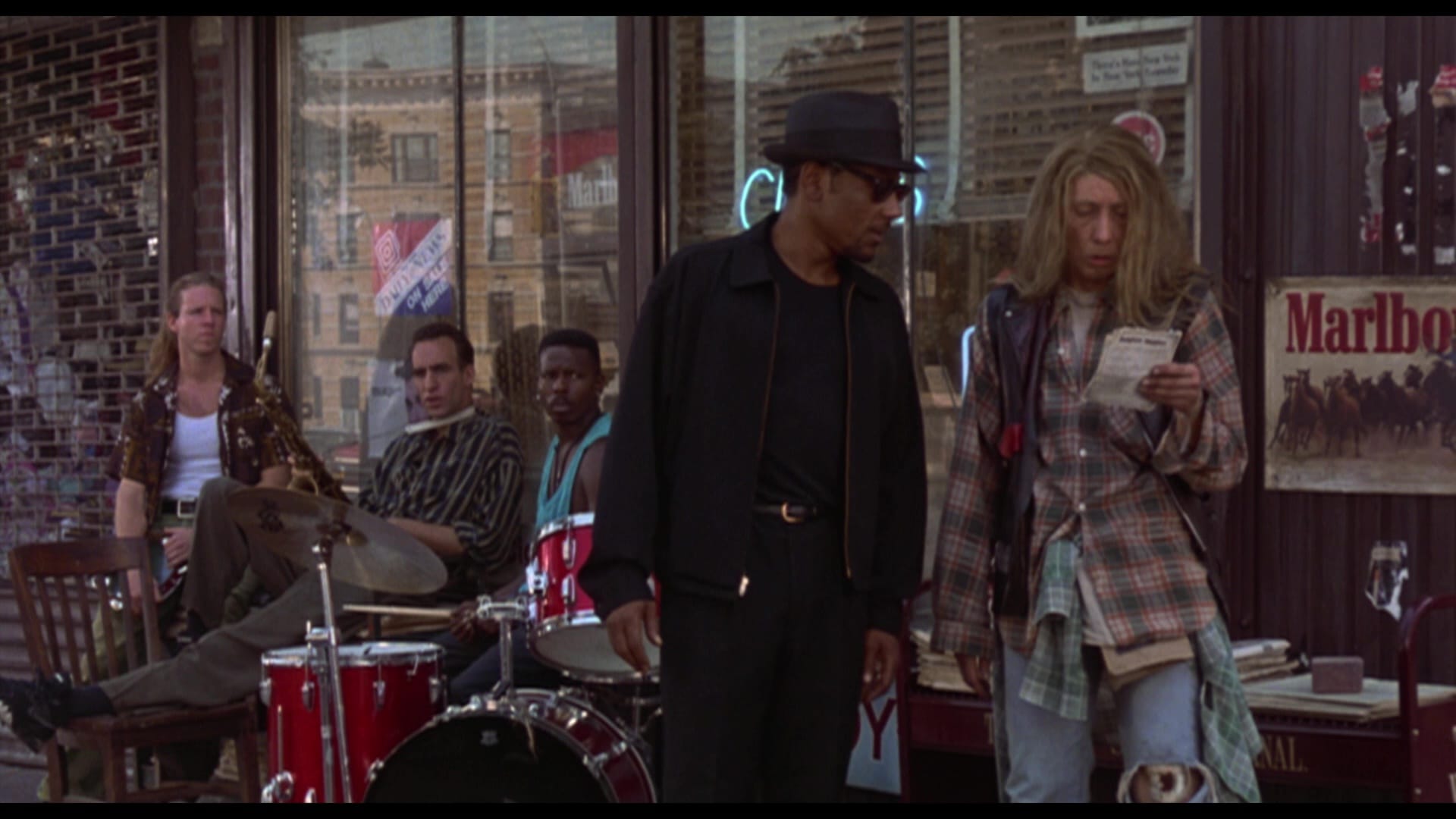
Smoke and Blue in the Face never really got the love they deserved at the time, despite a pair of decent special-edition DVD releases in the early 2000s; the fact that both films effectively disappeared shortly afterward when the Miramax catalogue fell into rights limbo didn’t help much, either. I picked up the UK Blu-ray releases a few years back, convinced those were the best versions I’d ever see.
But the Miramax catalogue is back in play nowadays, and the Australian label Via Vision has gotten hold of both Smoke and Blue in the Face through its relationship with Paramount. And now we have a new boxed set of the pair as the latest release in Via Vision’s hardbox series of Imprint special editions, with newly commissioned special features as well as the bulk of the extras produced for those Miramax DVDs. (Like all of Via Vision’s discs, the set is region-free.)
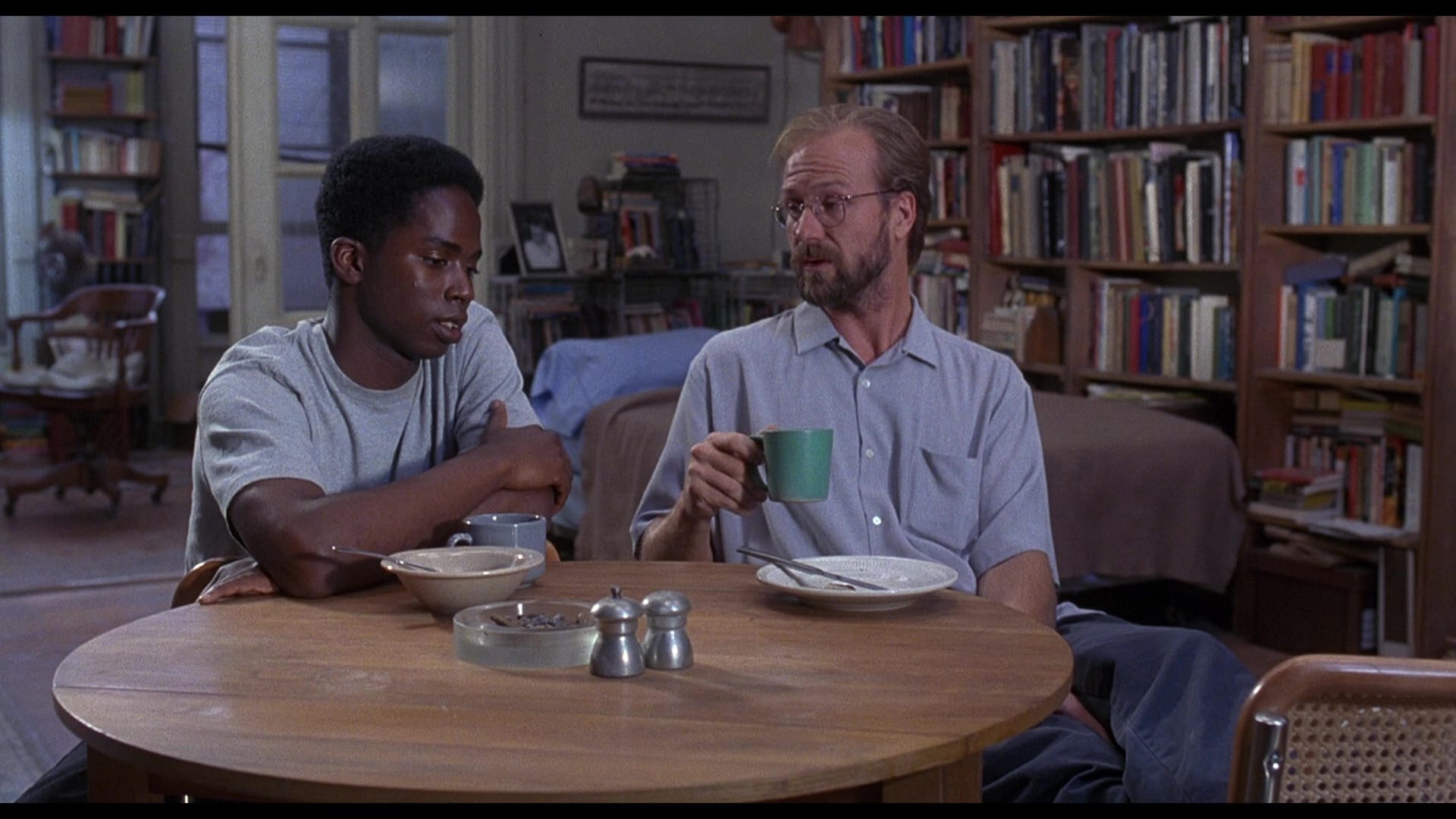
Smoke offers new interviews with co-star Harold Perrineau, editor Maysie Hoy and production designer Kalina Ivanov, while Blue in the Face catches up with co-star Jared Harris, editor Christopher Tellefsen and producer Diana Phillips.
Archival supplements include the Berlin Film Festival press conference for Smoke; audio commentary on both features by Auster, Keitel and producers Greg Johnson and Peter Newman, interviews with Wang on Smoke and Lou Reed and Mel Gorham on Blue in the Face and an assortment of featurettes, deleted scenes, outtakes and trailers.
But the real treasure of the set, for what I hope will be obvious reasons, is “Running Off to the Circus: Paul Auster on Film”, a feature-length documentary directed by Spencer Ostrander and Theodore Rex King, in which Auster speaks at length about his lifelong relationship with cinema, the allure of making his own movies and the challenge of writing for a different medium. I didn’t expect to get this much more time with Auster, and it’s everything I could have hoped for – thoughtful, wry, just a little obsessive and deeply, deeply human. I’m so glad to have had a little more time with him.
Speaking of films you never expected to get the special-edition treatment, I’ve been added to the Severin Films press list! I just wanted to request a review copy of the label’s next All the Haunts Be Ours folk-horror collection, which is coming in November, and as if by eldritch magic all three of Severin’s September Blu-rays arrived earlier this week: The Creature, A Dog Called … Vengeance and The Mummy and the Curse of the Jackals, each one a celebration of weird, sleazy cinema. With canines.
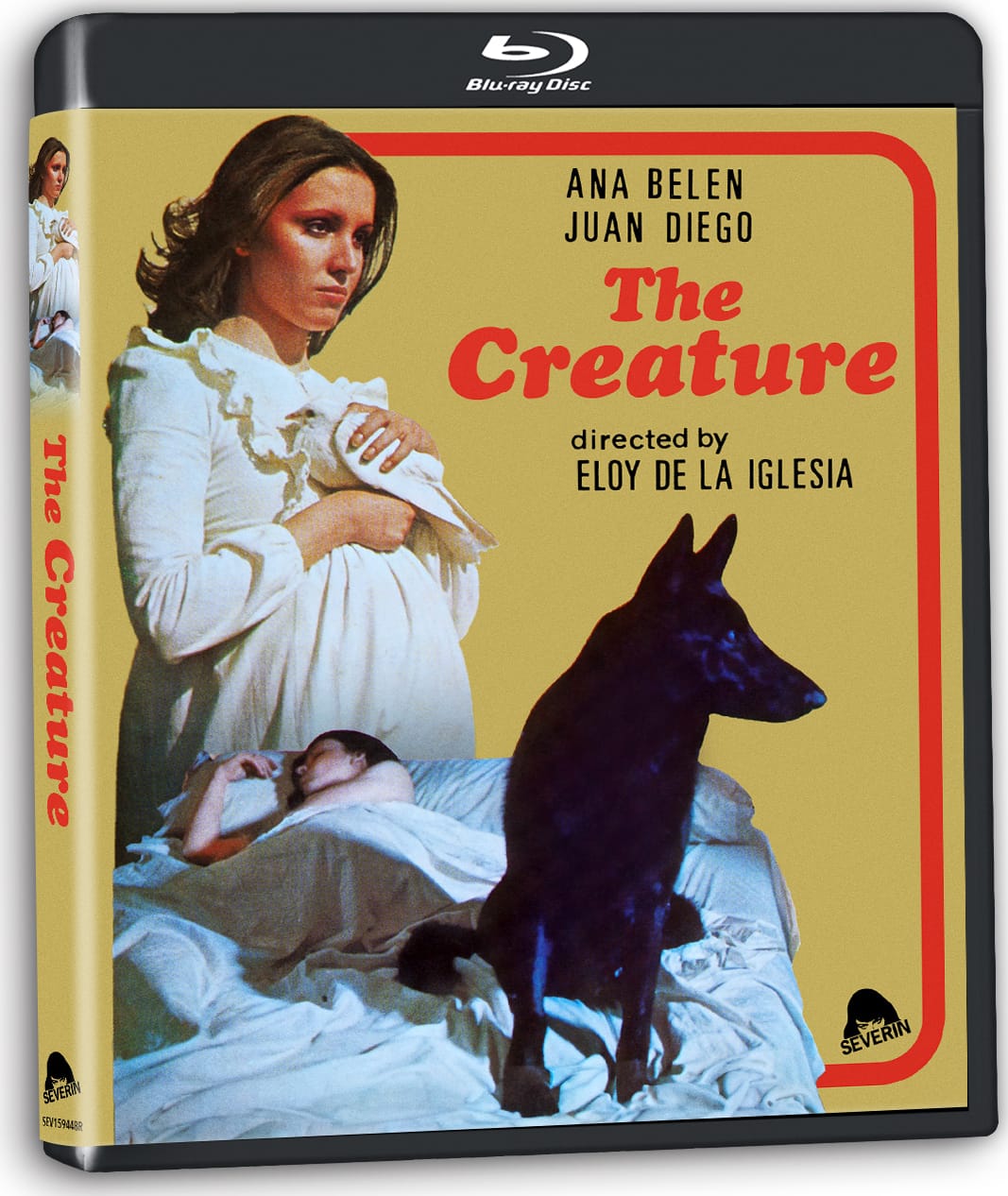
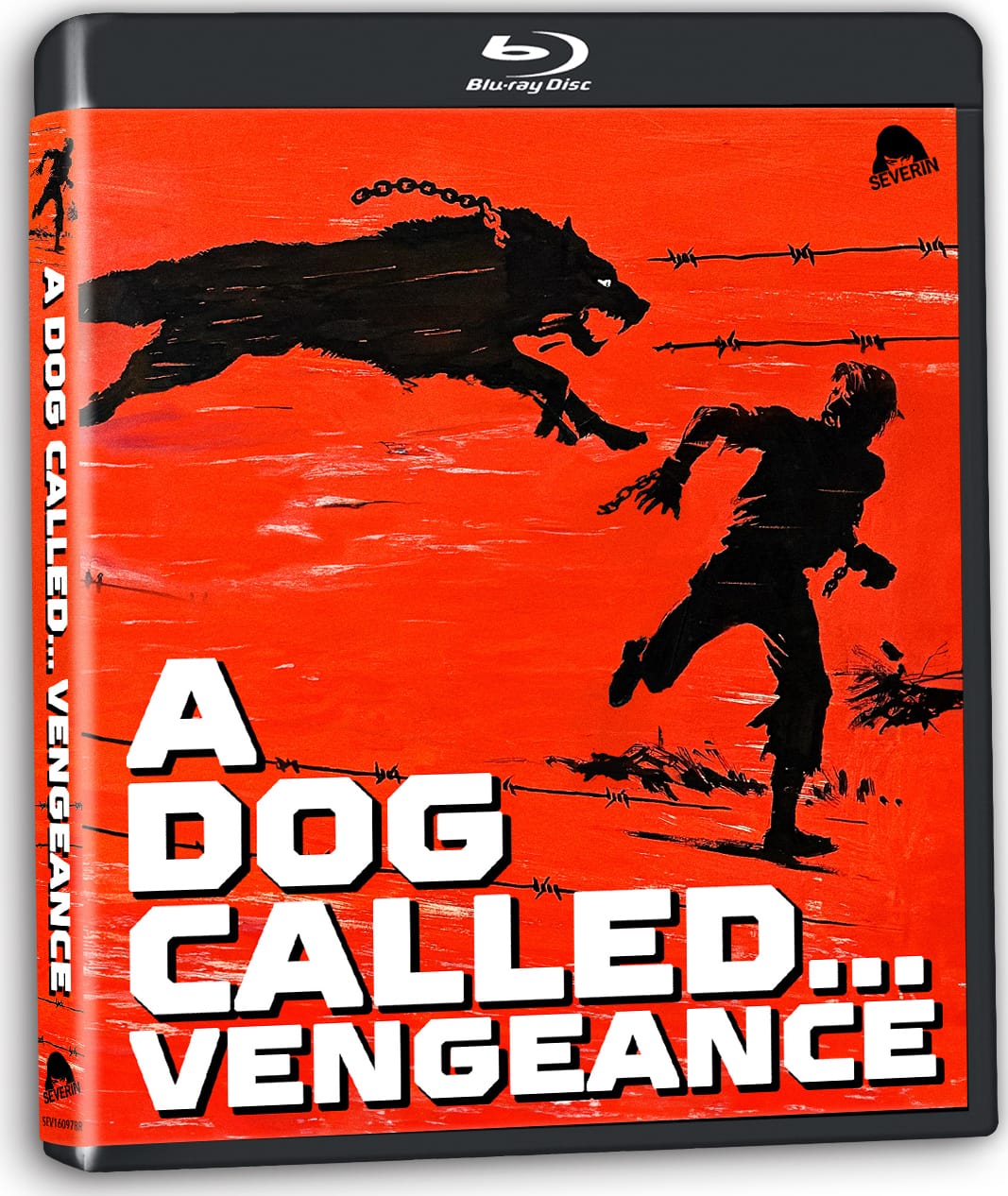
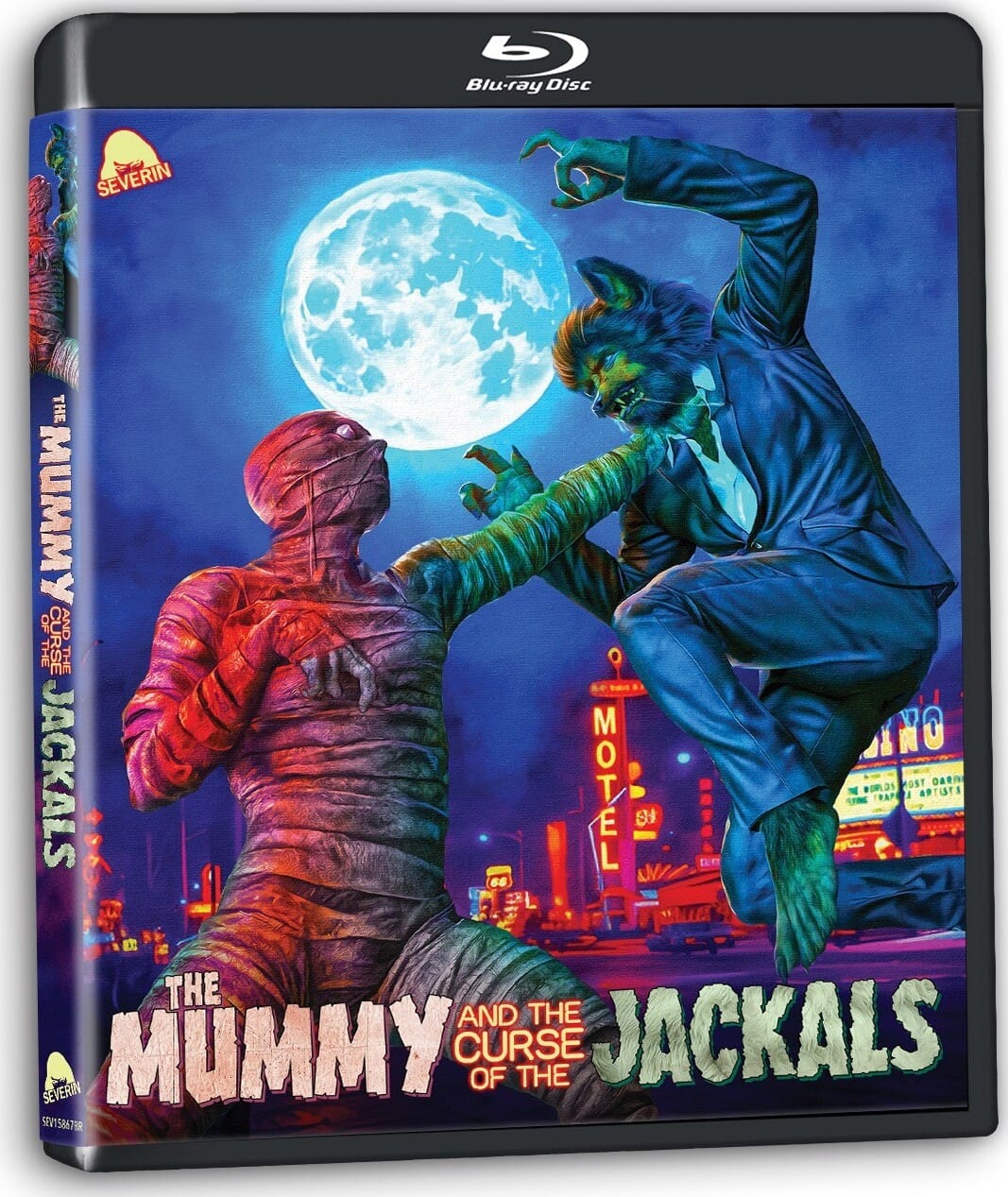
Let's go in alphabetical order.
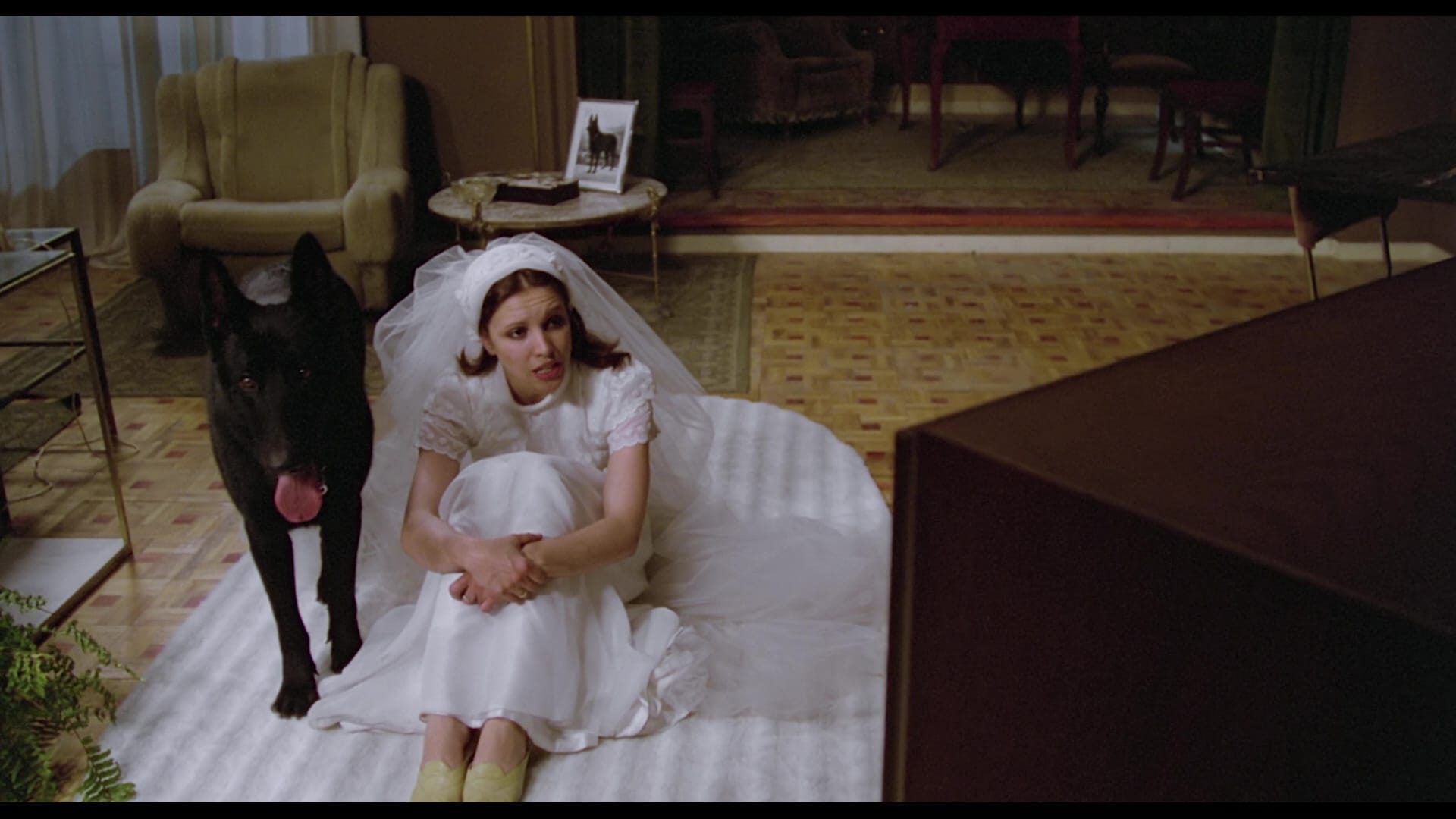
Eloy De La Iglesia’s The Creature, made in 1977, is a psychological study of Cristina (Ana Belen) and Marcos (Juan Diego), a couple in post-Franco Spain who attempt to get past a traumatic miscarriage by adopting a dog, Bruno, with whom Cristina quickly bonds and Marcos … does not. Marcos’ attempts to restore balance to his household grow stranger and more desperate, jeopardizing his job as a television presenter, and all the while Cristina and Bruno’s connection grows more ... intimate. For a movie about a woman who almost certainly has consensual sex with a German shepherd, The Creature is admirably sensitive to Cristina’s emotional issues. And believe you me, that’s a sentence I never thought I’d write.
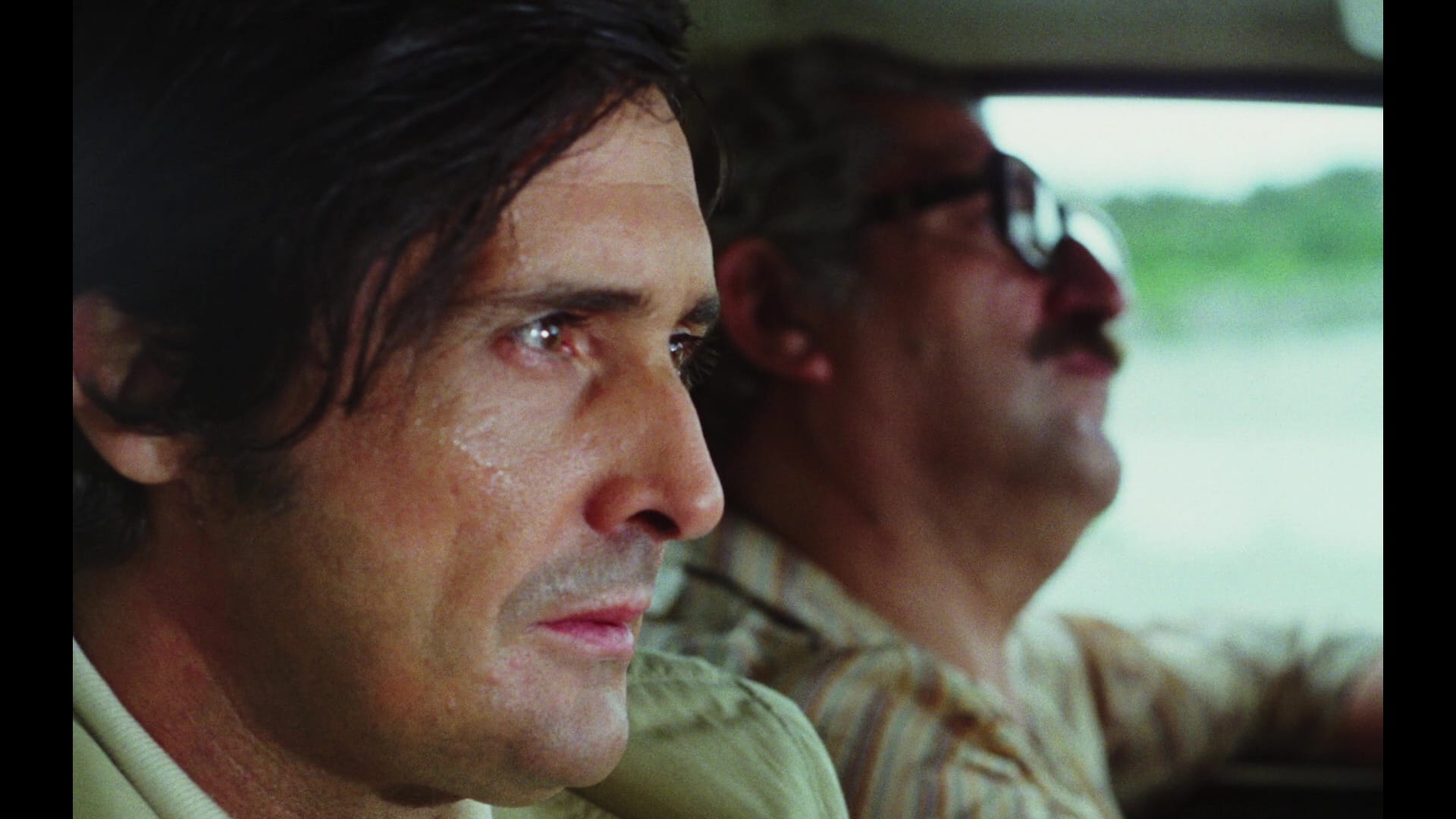
Made the same year, Antonio Isasi’s A Dog Called … Vengeance is a sweaty, sleazy Spanish thriller about an escaped prisoner (The Exorcist’s Jason Miller, looking a lot like Dennis Hopper or Harry Dean Stanton depending on the angle) trying to find safe haven while being pursued by a relentless military dog. Wherever he goes, wherever he hides, the dog is always right behind him, stalking the people with whom he comes into contact like a furry Terminator. The movie even gives the dog some manner of agency, with POV shots designed to show us its deductive process.

This is the weirdest version of The Fugitive you’ll ever see, and weirder still if you watch the Spanish-language version where Father Karras appears to be speaking in tongues, but it’s played straight and it’s presented in a 2K restoration from the original camera negative that looks like it was shot yesterday. The movie also opens with a text screen informing us Isasi attested no animals were harmed during the shoot. (I’m not sure I believe him.)
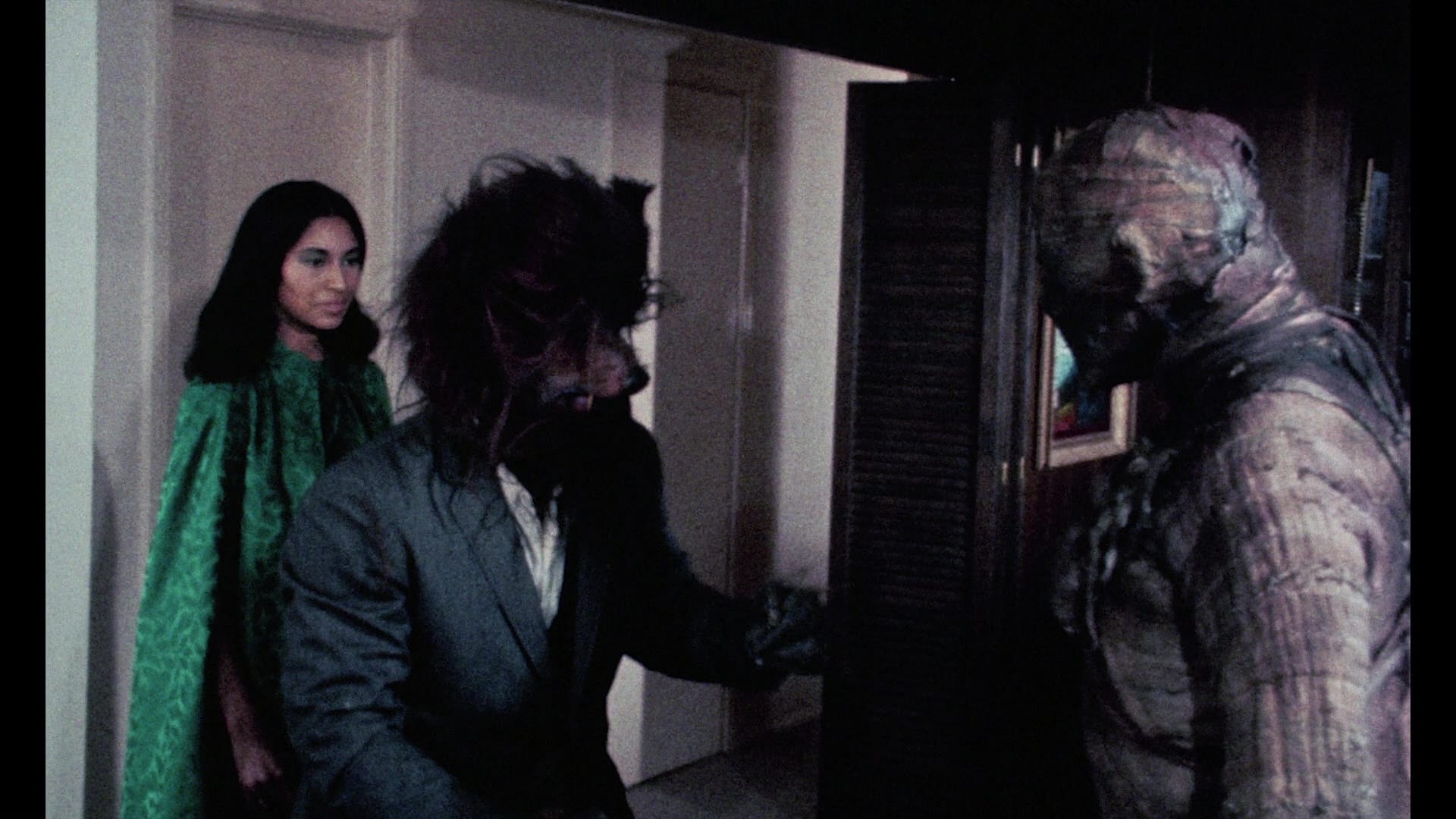
Finally there’s Oliver Drake’s The Mummy and the Curse of the Jackals, which is easily the least of these films – just a dopey grindhouse programmer from the low-rent Vega International shingle starring Anthony Eisley as an unlucky archaeologist who becomes a were-jackal, putting him on a collision course with a resurrected Egyptian princess (Marliza Pons) and the lumbering mummy she commands – but the care with which it’s been restored and presented here is truly remarkable. Severin’s Blu-ray is designed in tribute to Vega, which cranked out horror and sexploitation junk that Ed Wood would have disowned, featuring a new master of the film (“scanned in 4K from the blow up internegative discovered at Eding ‘Lucky’ Brown’s Los Angeles estate sale”) that, while nowhere near pristine, still looks a lot better than the version currently streaming on Tubi.

The disc also includes Drake’s 1974 sexploitation picture Angelica, The Young Vixen, scanned from what we're told is the sole surviving print; it looks absolutely terrible, but that’s what’s so weirdly appealing: Like the German grindhouse print of Cross of Iron included as a bonus on Imprint’s special edition of that film, it’s more interesting for its condition than its content. Other extras include “The Vega International Story”, with author Stephen Thrower providing a history of the mini-studio; film historian C. Courtney Joyner discuss the director’s exploitation career in “Cowboys, Mummies and Oliver Drake”, taking a moment to refute the accusation that Drake was well into senility while shooting his magnum opus. There’s also an interview with Garry Gassel, whose parents Milton R. Gassel and Judi Gassel were investors in The Mummy and the Curse of the Jackals.

Yep, people expected this movie to turn a profit. It was a different time.
Smoke and Blue In The Face: Two Films By Wayne Wang is available now from Via Vision Entertainment; The Creature, A Dog Called … Vengeance and The Mummy and the Curse of the Jackals are all available on Blu-ray from Severin Films, and even on sale right now. Go with God.
